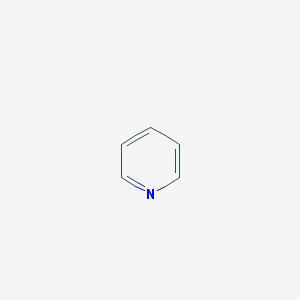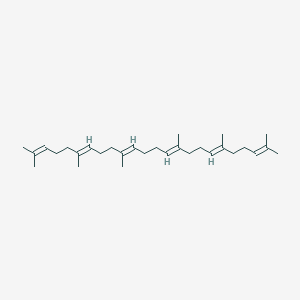-
Categories
-
Pharmaceutical Intermediates
-
Active Pharmaceutical Ingredients
-
Food Additives
- Industrial Coatings
- Agrochemicals
- Dyes and Pigments
- Surfactant
- Flavors and Fragrances
- Chemical Reagents
- Catalyst and Auxiliary
- Natural Products
- Inorganic Chemistry
-
Organic Chemistry
-
Biochemical Engineering
- Analytical Chemistry
- Cosmetic Ingredient
-
Pharmaceutical Intermediates
Promotion
ECHEMI Mall
Wholesale
Weekly Price
Exhibition
News
-
Trade Service
With the development and improvement of modern biotechnology, antibody drugs have become the fastest-growing therapeutic drugs and occupy an important position in the field of biotechnology pharmaceuticals
.
Antibodies, also called immunoglobulins (Ig), are glycoproteins that can specifically bind to antigens.
There are five main types of Ig expressed in the human body: IgM, IgA, IgD, IgG and IgE, with the highest content of IgG
There are four subclasses of IgG, whose characteristics are shown in Table 1.
The activity of anti-polysaccharide antigens mainly depends on IgG1 and IgG2, while anti-protein and anti-viral antibodies are IgG1, IgG3, and IgG4
.
Among them, IgG1 is most expressed in the human body, and the half-life of IgG1 in human serum is the longest, up to 21 days
.
IgG1 has a Y-shaped structure, as shown in Figure 1.
It consists of two identical heavy chains (approximately 55kDa) and two identical light chains (approximately 25kDa).
These four polypeptide chains are joined together by hydrophobic interaction and are composed of disulfide chains.
Connect
.
The heavy chain is composed of VH, CH1, hinge region, CH2 and CH3, and the light chain is composed of VL and CL
.
In terms of the mechanism of antibody action, the antibody is composed of an antigen binding site (Fab) and a crystallizable site (Fc)
.
The Fab segment can bind to a specific antigen, thereby determining the specificity and affinity of the antibody; the Fc segment can bind to Fc receptors (FcγRI, FcγRII, FcγRIII) expressed on the surface of immune cells, complement (C1q) and FcRn in the blood, Thereby activating the immune effect to eliminate foreign objects
.
The structure of the antibody determines its mechanism of action.
Its Fab segment can recognize the target of free molecules (VEGF, TNF, etc.
) and receptors on the cell surface (CD20, CD19, etc.
), and determine the specific recognition of foreign invaders such as cancer cells.
The Fc section determines the effector functions of antibodies, including antibody-dependent cell-mediated cytotoxicity (ADCC) and complement-dependent cytotoxicity (CDC), ADCC and CDC mechanisms
.
ADCC
When the antibody binds to the tumor cell surface antigen through the antigen binding site and the Fc site binds to the Fc receptor on the surface of the immune effector cell, the immune effector cell is activated and kills the tumor cell.
This process is called ADCC
.
There are three main Fc receptors: FcγRI (CD64), FcγRII (CD32), and FcγRIII (CD16).
The latter two can be divided into: FcγRIIa, FcγRIIb, FcγRIIc, FcγRIIIa, and FcγRIIIb
Many clinical studies have proved that ADCC is the main way for tumor antibodies to function, such as trastuzumab and alemtuzumab
.
The strength of antibody-mediated ADCC is related to many factors, such as the affinity between the antibody and the antigen, the affinity between the antibody and the Fc section receptor, and the characteristics of immune effector cells
.
Many studies have shown that glycosylation and amino acid sequence modification of the Fc segment of antibodies can improve ADCC activity
.
Stavenhagen’s research team used the yeast presentation system to screen a large number of Fc mutants, and found that a mutant with 5 mutations (F243L, R292P, Y300L, V305I and P396L) had a 10-fold increase in the affinity for FcγRIIIa, and also had more Strong ADCC activity
.
CDC
Complement is a group of heat-labile proteins that exist in human or vertebrate serum and tissue fluid and have enzymatic activity after activation, including more than 30 soluble proteins and membrane-bound proteins
.
CDC refers to the cytotoxicity of complement, that is, complement (C1-C9) binds to the corresponding antigen on the cell membrane surface through specific antibodies to form a complex and activate the classical pathway of complement to form a membrane attack complex to exert a lytic effect on target cells
.
The CDC effect is caused by the first binding of the antibody and complement C1q, and then C2-C9 is activated to form a membrane attack complex to exert a lytic effect on target cells
.
Many anti-tumor antibodies can cause CDC effects, such as anti-CD20, CD52, CEA and other antibodies
.
Scholars have done a lot of research on how to improve CDC activity
.
Idusogie EE et al.
used alanine scanning mutation technology to study the CDC function of the anti-CD20 antibody rituximab, and found the sites Asp270, Lys322, Pro329 and Pro331 that bind to C1q in the CH2 domain.
After modification, it can increase the binding to C1q and CDC.
Active
.
In addition to the modification of the amino acids in the CH2 domain, the adjustment of the amino acids in the hinge region can also significantly increase the binding of C1q and CDC activity
.
As can be seen in Table 1 above, the classical pathway of IgG3 activates the highest complement activity
.
As shown in Figure 4, Tsuguo Kubota's team used genetic mutations to replace the heavy chain constant region sequences of IgG1 and IgG3 to construct an IgG1/IgG3 mixed antibody.
Surprisingly, this antibody showed strong C1q binding and CDC activity
.
In in vitro experiments, the CDC activity of the anti-CD20 IgG1/IgG3 mixed antibody is dozens of times that of wild-type rituximab
.
It is worth mentioning that if an antibody is defucosylated to increase its ADCC activity, and the heavy chain constant region sequence is adjusted to increase CDC activity, it can be more active without affecting ADCC activity or CDC activity.
Strong antibodies
.
Reference source:
1.
"Antibody Theory and Technology";
2.
"Research and Application of Antibody Drugs";
3.
Improving effector functions of antibodies for cancer treatment: Enhancing ADCCand CDC;
4.
Engineered therapeutic antibodies with improved effector functions
.







